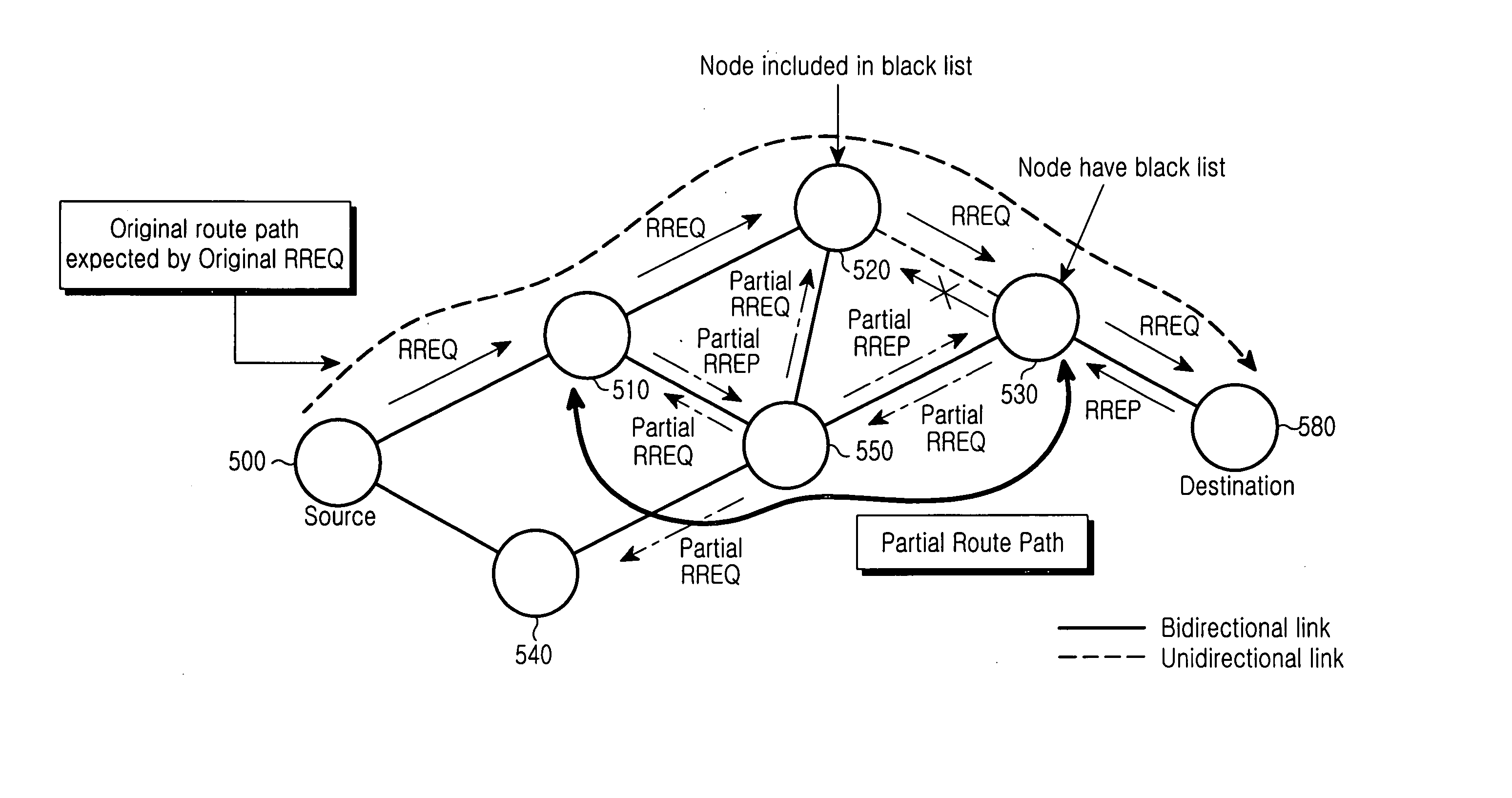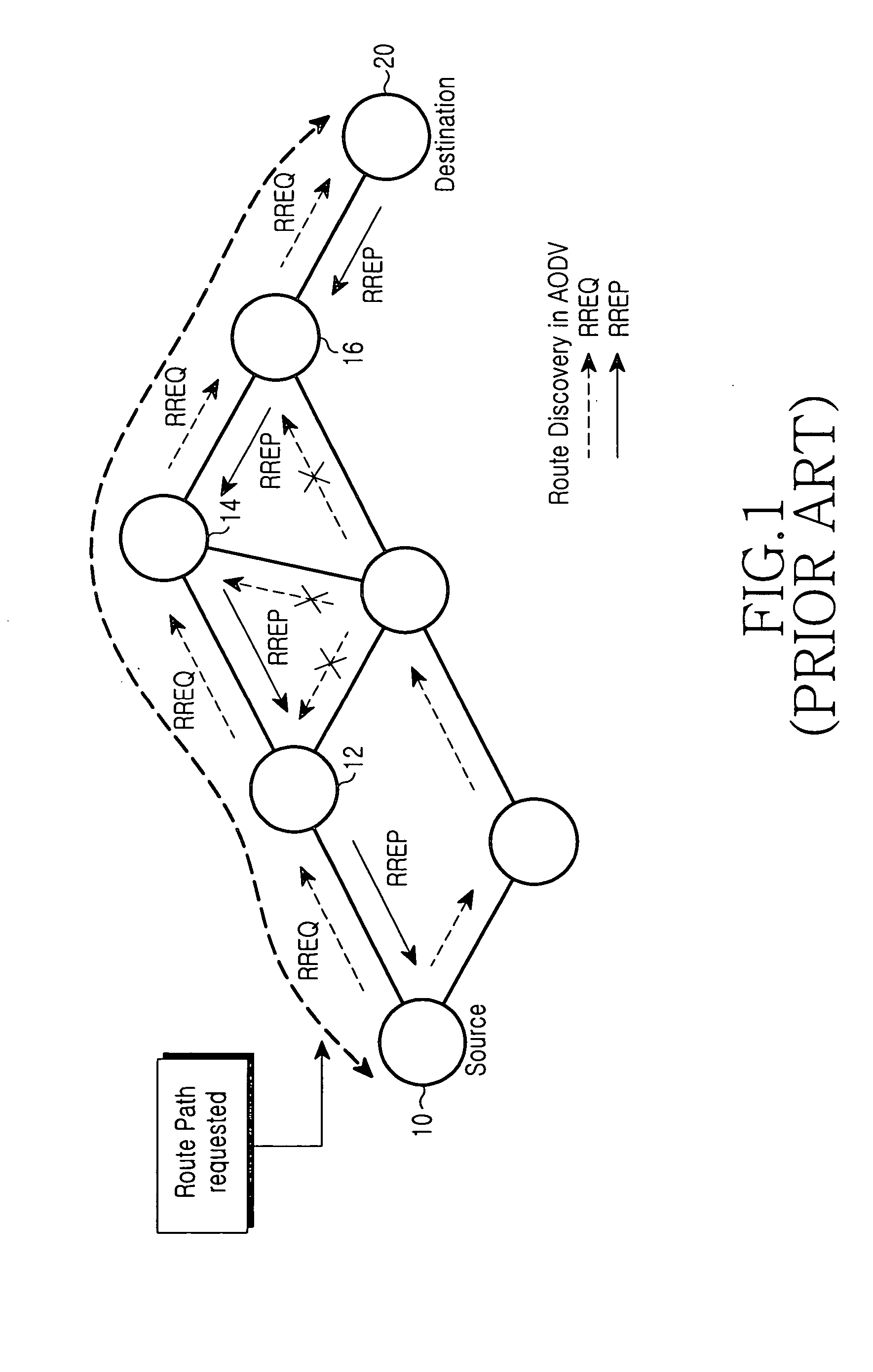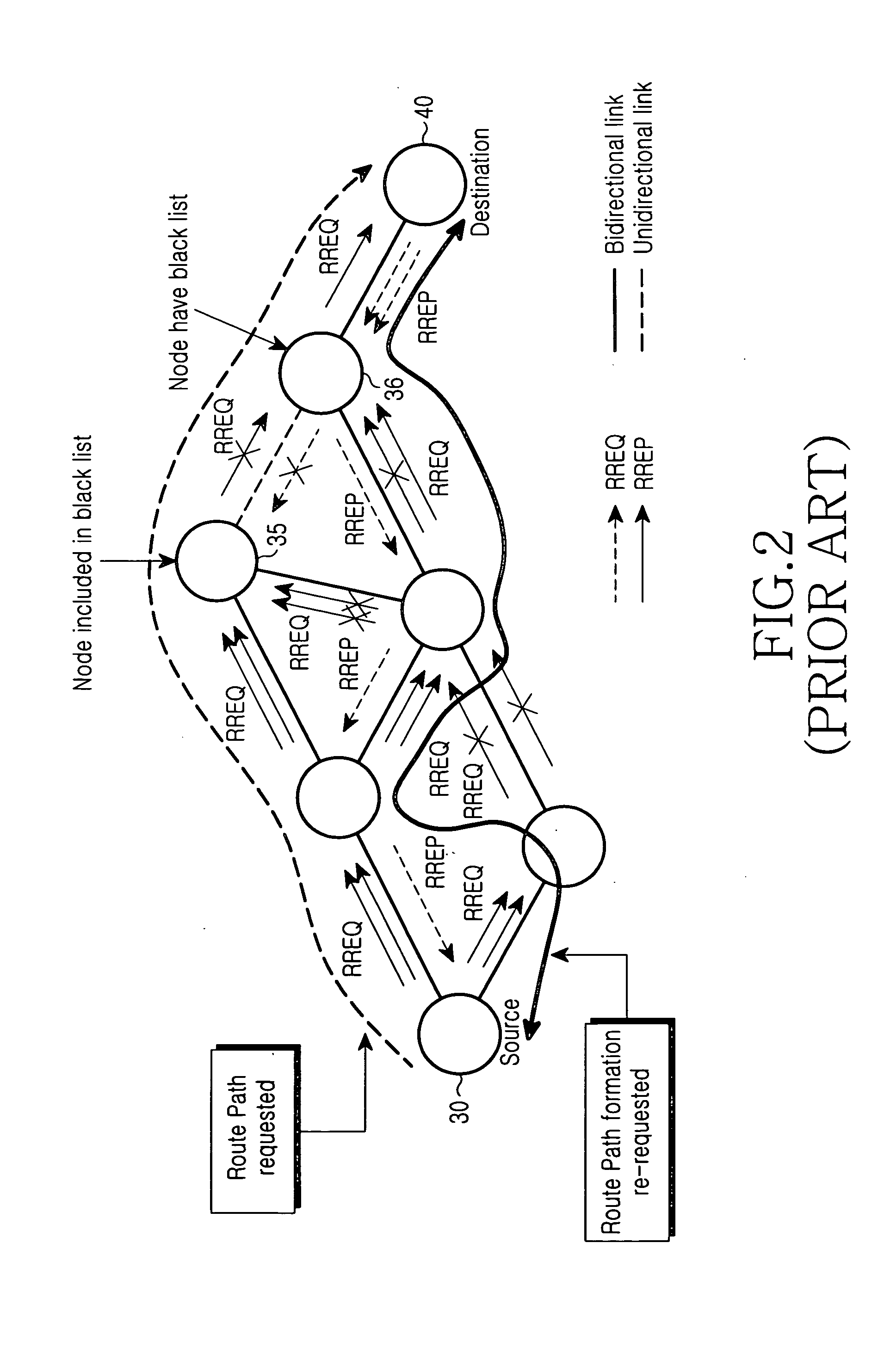Method for setting up route path through route discovery in a mobile ad hoc network using partial route discovery
a mobile ad hoc network and route discovery technology, applied in the field of mobile ad hoc networks, can solve the problems of high possibility, failure to discover and set up a route path, and above problems, and achieve the effect of increasing the efficiency of the entire network and reducing the time delay required
- Summary
- Abstract
- Description
- Claims
- Application Information
AI Technical Summary
Benefits of technology
Problems solved by technology
Method used
Image
Examples
Embodiment Construction
[0042] Several preferred embodiments of the present invention will now be described in detail with reference to the annexed drawings. In the drawings, the same or similar elements are denoted by the same reference numerals even though they are depicted in different drawings. In the following description, a detailed description of known functions and configurations incorporated herein has been omitted for conciseness.
[0043]FIG. 3 is a block diagram illustrating a node capable of more efficiently performing route discovery in a mobile ad hoc network according to a preferred embodiment of the present invention. As illustrated, a node adapted for route discovery in a mobile ad hoc network according to an embodiment of the present invention has a reception (RX) block 120, a transmission (TX) block 140, an RREQ block 150, an RREP block 160, an RERR block 170, a data block 180, a link failure block 190, a partial route discovery block 200, and a neighbor RSSI (Received Signal Strength Ind...
PUM
 Login to View More
Login to View More Abstract
Description
Claims
Application Information
 Login to View More
Login to View More - R&D
- Intellectual Property
- Life Sciences
- Materials
- Tech Scout
- Unparalleled Data Quality
- Higher Quality Content
- 60% Fewer Hallucinations
Browse by: Latest US Patents, China's latest patents, Technical Efficacy Thesaurus, Application Domain, Technology Topic, Popular Technical Reports.
© 2025 PatSnap. All rights reserved.Legal|Privacy policy|Modern Slavery Act Transparency Statement|Sitemap|About US| Contact US: help@patsnap.com



